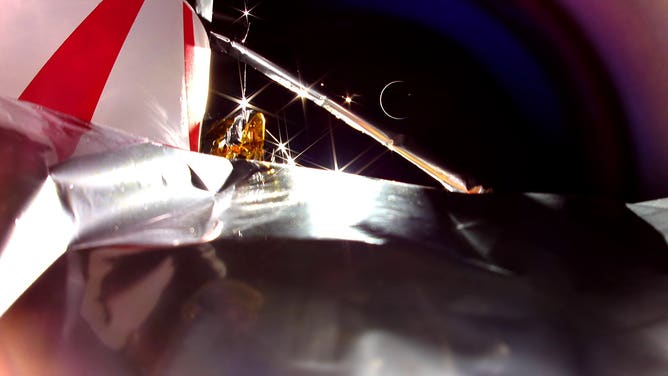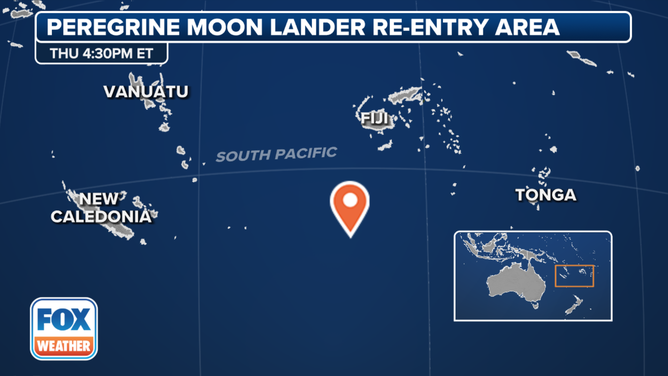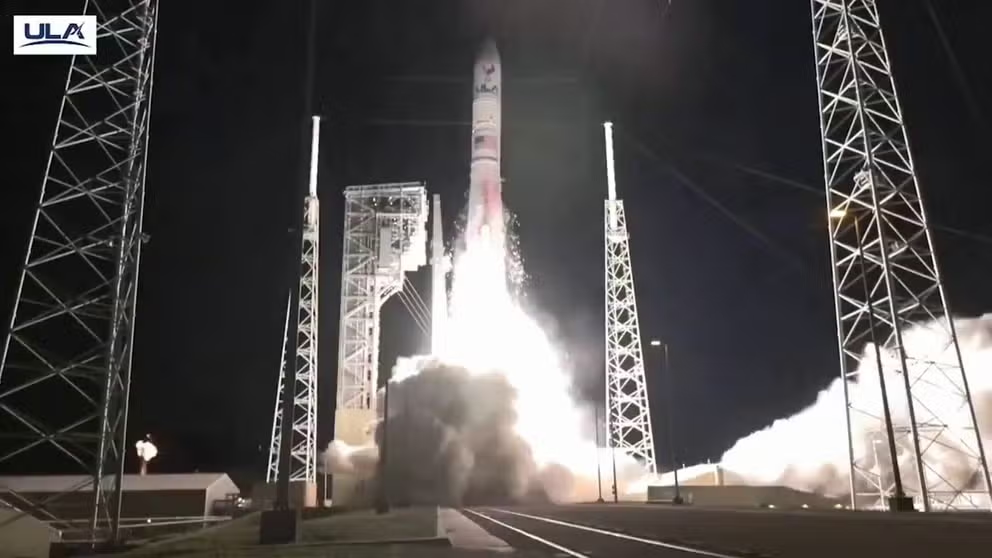Peregrine Moon lander burns up over South Pacific Ocean ending foiled lunar mission
Peregrine re-entered Earth's atmosphere on Thursday over the South Pacific, ending the ill-fated lunar mission after 10 days.
Inaugural launch of ULA's Vulcan rocket
ULA's Vulcan rocket launches for the first time carrying the Peregrine Moon lander to space. The liftoff happened from Cape Canaveral, Florida on Jan. 8. (video: ULA)
The first American commercial lander to attempt a mission to the Moon came barreling back to Earth on Thursday, burning up over a remote area in the Pacific Ocean, ending the Peregrine Moon lander's mission.
Astrobotic's Peregrine Moon lander launched on Jan. 8 on a United Launch Alliance Vulcan rocket from Florida. The lunar robot was carrying five NASA science payloads as part of the space agency's Commercial Lunar Payload Services program and more than a dozen other items from customers around the world.

A view of Earth seen by Peregrine on Thursday, Jan. 18, 2024.
However, the lander and its science payloads did not land near the Moon's South Pole as planned after the craft's propulsion system was damaged in space, meaning the lander didn't have enough fuel for a lunar landing. Astrobotic worked with NASA and other U.S. government agencies to determine how to end the star-crossed lunar mission safely and determined allowing the spacecraft to burn up in Earth's atmosphere was the best option.
Peregrine completed a two-step maneuver on Wednesday to line up its mission-ending trajectory. Astrobotic said Peregrine fired its main engines in 23 short burns. The engineering team then adjusted the spacecraft's attitude to set it up for a path over the South Pacific Ocean.
'NO CHANCE OF' MOON LANDING FOR PEREGRINE LANDER AFTER MISSION-CRITICAL SPACEFLIGHT ISSUES

The center of the area over the South Pacific where Peregrine re-entered Earth's atmosphere.
(FOX Weather)
PEREGRINE SPACECRAFT REACHES MOON DISTANCE BUT LUNAR LANDING WON'T HAPPEN
Peregrine was expected to re-enter Earth's atmosphere around 4 p.m. ET Thursday over the South Pacific with a trajectory south of the islands of Fiji. Most of the spacecraft was expected to burn up in Earth's atmosphere.
Astrobotic said it received independent confirmation that the spacecraft made a controlled re-entry over the ocean.
"Peregrine Mission One has concluded. We look to the future and our next mission to the Moon, Griffin Mission One. All of the hard-earned experience from the past 10 days in space, along with the preceding years of designing, building, and testing Peregrine, will directly inform Griffin and our future missions," Astrobotic said in a statement. "Peregrine and its payload teams have made a meaningful contribution to our lunar future, and we thank everyone who supported this mission."
Peregrine operated in space for more than 10 days. This marked the first spaceflight for Pittsburgh-based Astobotic. The company is working on a second mission to launch in late 2024, carrying NASA's VIPER rover to the lunar South Pole.
